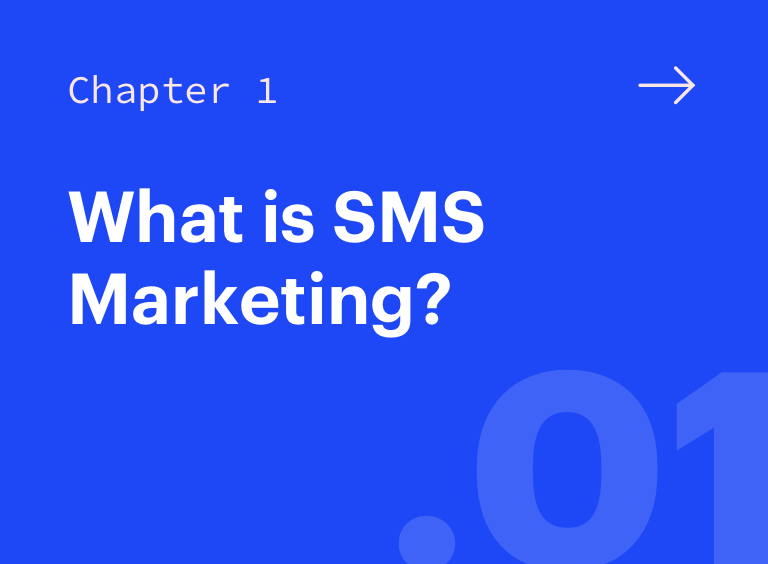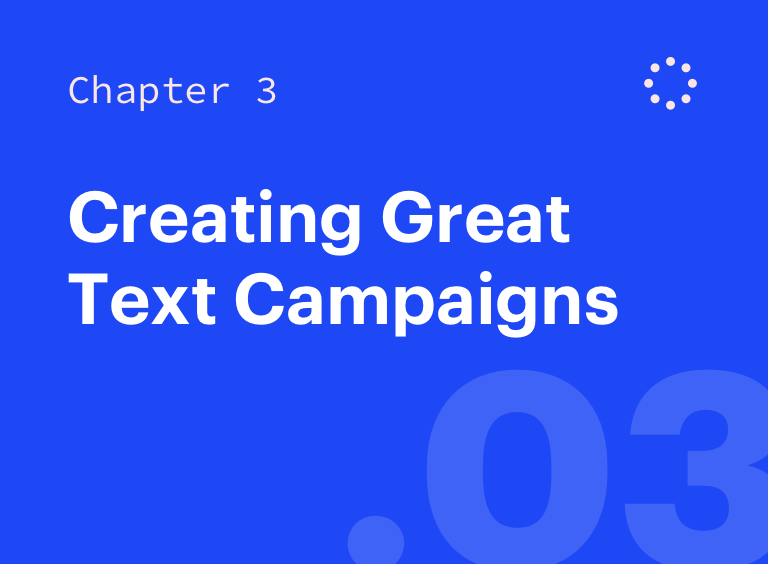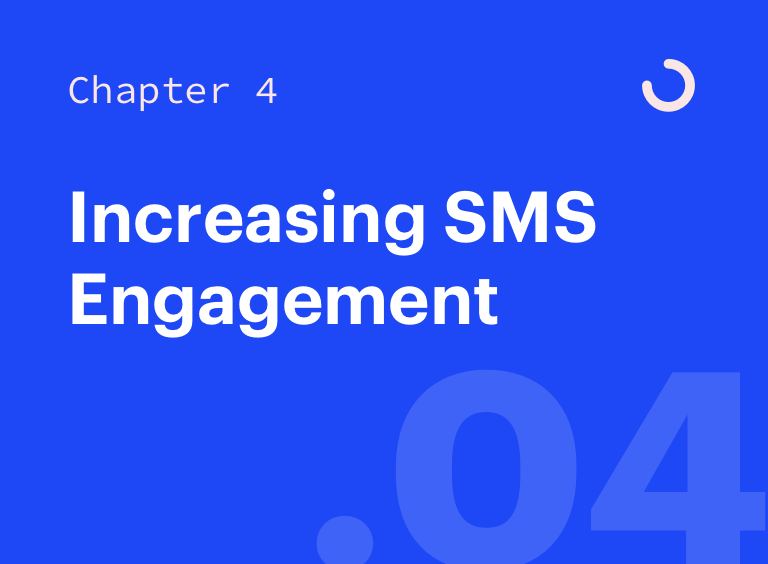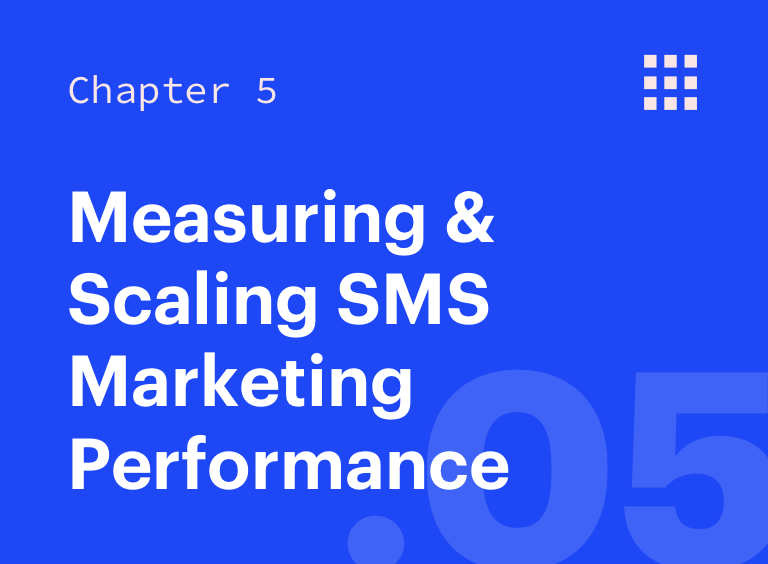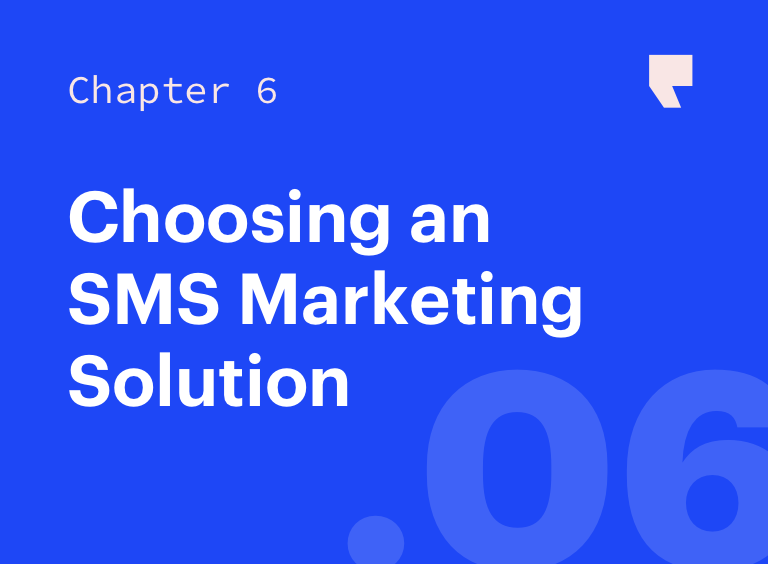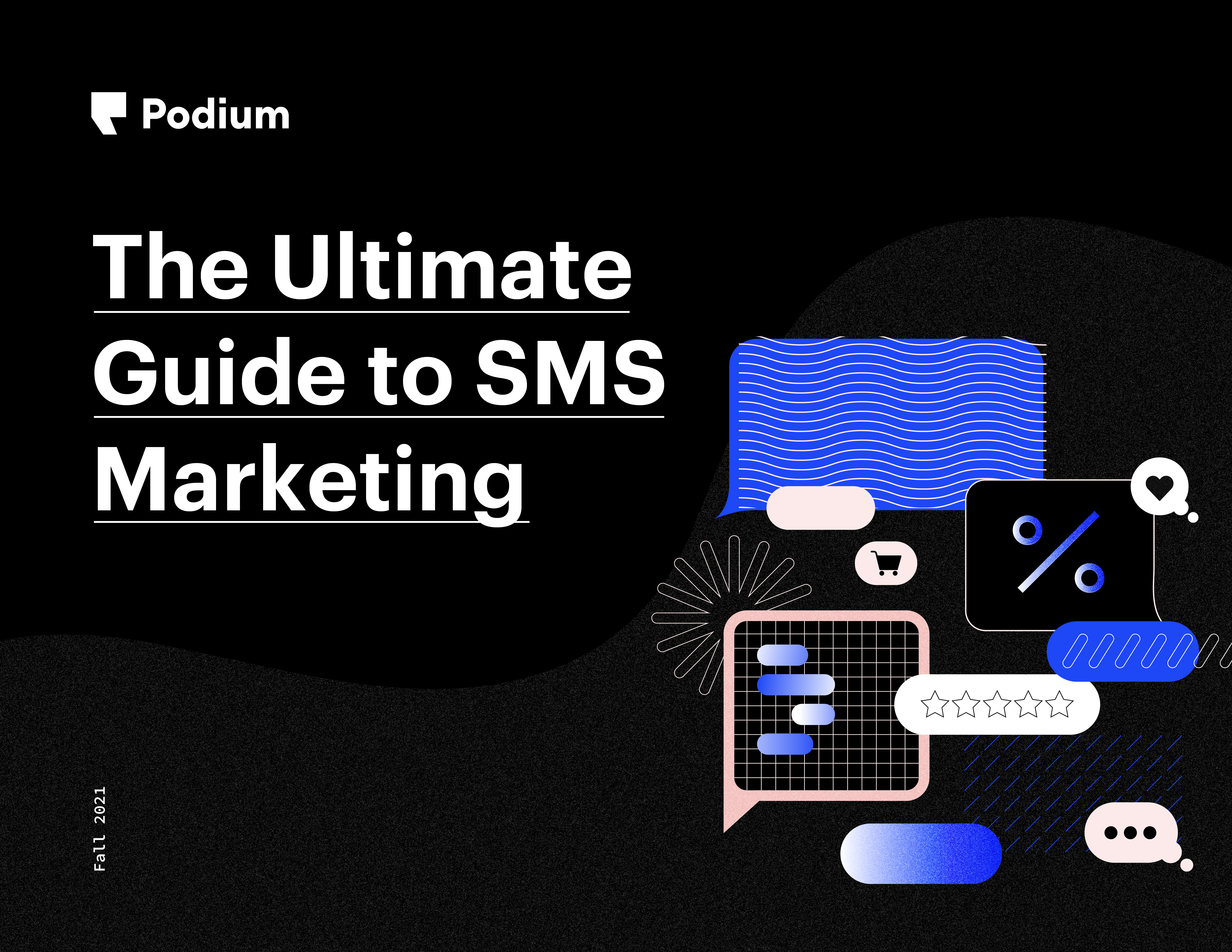
SMS Marketing
Increasing SMS Engagement
Segmented campaigns boast open rates 14% higher than non-segmented campaigns and 101% more clicks. And they lower your bounce rates too. Read on to learn:
- How to segment effectively
- How to develop a campaign content calendar
- When to send campaigns and respond to SMS marketing replies
Increasing SMS Engagement
Another best practice involves segmenting your customer base—that is, grouping your customer records into lists that share an attribute or characteristic(s) that aligns well to specific targeted messages. Even a little segmentation can increase customer loyalty, decrease your opt-out rate, and significantly increase revenue.
According to recent research, segmented campaigns boast open rates 14% higher than non-segmented campaigns and 101% more clicks. They significantly lower bounce rates, unsubscribes, and reporting incidences.
Segmentation is also a crucial aspect of personalization. And there’s nothing consumers are craving more than personalization. According to Forbes, 70% of millennials are frustrated with brands sending irrelevant emails, let alone text messages.
This frustration and desire for a personalized experience has serious ramifications, and opportunity, for local businesses. 80% of consumers are more likely to purchase from a brand who tailors their experiences for them. And 91% of consumers are more likely to patronize brands that provide offers and recommendations relevant to them.
It’s really quite simple. If you want to keep your opt-ins happy and earn more business, you have to segment. And that starts with tracking key characteristics. With the right solutions in place, getting started doesn’t have to be hard.

Behavioral vs. demographic
The purpose of segmentation is to create smaller lists of customers based on a criteria you can easily document. There are several different customer segmentation models you can use, including:
- Behavioral segmentation (tendencies and frequent actions, feature/product use)
- Demographic segmentation (age, gender, income)
- Geographic segmentation (country, state, city)
- Psychographic segmentation (personality, values, interests)
- Technographic segmentation (mobile vs desktop use, apps)
The variables you use depend on your business, the promotions you’re running, and a number of other factors you probably know but just haven’t thought through. But regardless of your industry, the characteristics you want to track usually fall into one of two buckets: behavioral or demographic.
Behavioral segmentation involves categorizing your customers according to their behavior. The most popular way to segment is according to purchase history. Perhaps you’ve noticed that customers who have spent in the past year are more likely to come into your jewelry store for a Mother’s Day gift. Or that customers who come in on Labor Day are likely to make repeat purchases for Black Friday.
All of these can be used to your advantage in planning your campaigns. Other key behaviors to track include website history, customer journey, frequent actions, and product use.
Some common, high-impact examples of behavioral segmentation in campaigns might include using:
- Purchase or review recency as an indicator of positive engagement with your brand
- Response to past sales as an indicator of interest in similar sales
- Type of item or service purchased as an indicator of interest in similar offerings
Demographic segmentation is less subject to change and involves elements such as age, gender, and income. For example, it might be important to note that a certain group of patients are looking for denture packages over whitening packages. Or that your younger buyers are more likely to purchase from your Malibu boat collection than your Mastercraft.
If you have multiple locations, you always want to perform geographic segmentation as well. Consider which locations are performing best and what products consumers in each location gravitate toward.
Some common examples of useful demographic/geographic segmentation in campaigns might include using:
- Home location (e.g. zip code) to inform subscribers about upcoming events
- Weather events in a specific location to customize messages or offers
- Knowledge of whether the household has children to offer a family package
- Birthdate to share a special offer that feels personal

Questions to get started
- What are my customer segmentation goals?
- Who are my best customers? What do they look like? What are key characteristics of repeat customers?
- What specials or promotions do I expect would be more enticing to them?
- What was one of my customer’s most recent interactions with me?
- What was the nature of that interaction? (Did they come in store? Did they make a transaction? Did they leave a review? Was it positive or negative?)
Whatever you’re noticing, don’t overcomplicate it as you’re getting started. One of the most common mistakes local businesses make with segmentation is to go overboard in terms of categorizing. This can lead to extremely small segments that don’t result in more engagement or attempts to segment based on qualities that can’t be easily categorized. As you’re learning what works, start with 1-2 things that you can easily identify and build more robust segmentation as your list grows and you begin to understand which messages get the most attention from your customers.
For example, Sam wants to be sent a promo message with a special discount relevant to his (1) last purchase (2) during his birthday month, addressed specifically to him.
When sending texts, it’s important to think about segmentation in tandem with personalization variables, such as customers’ names. You should always anticipate customer wants and needs by considering the following:
- Name
- Date of birth
- Location
- Last purchase
- Previous feedback
- Website journey
- Seasons and holidays
To make this easier, tie your texting service software in with your CRM database. With the right templates, your messages can sound and feel personalized with very little effort on your part.
Dividing your customers into buckets for promotions and messaging takes time and research, but it’s well worth the effort. As you adjust and analyze accordingly, you’ll be able to send the right message, every time.
What Are the Best Times to Send a Campaign?
Customers want to hear from you more often than you might think. Over 60% actually want to hear from you at least once a week. However, going above this limit can lead to unsubscribes.
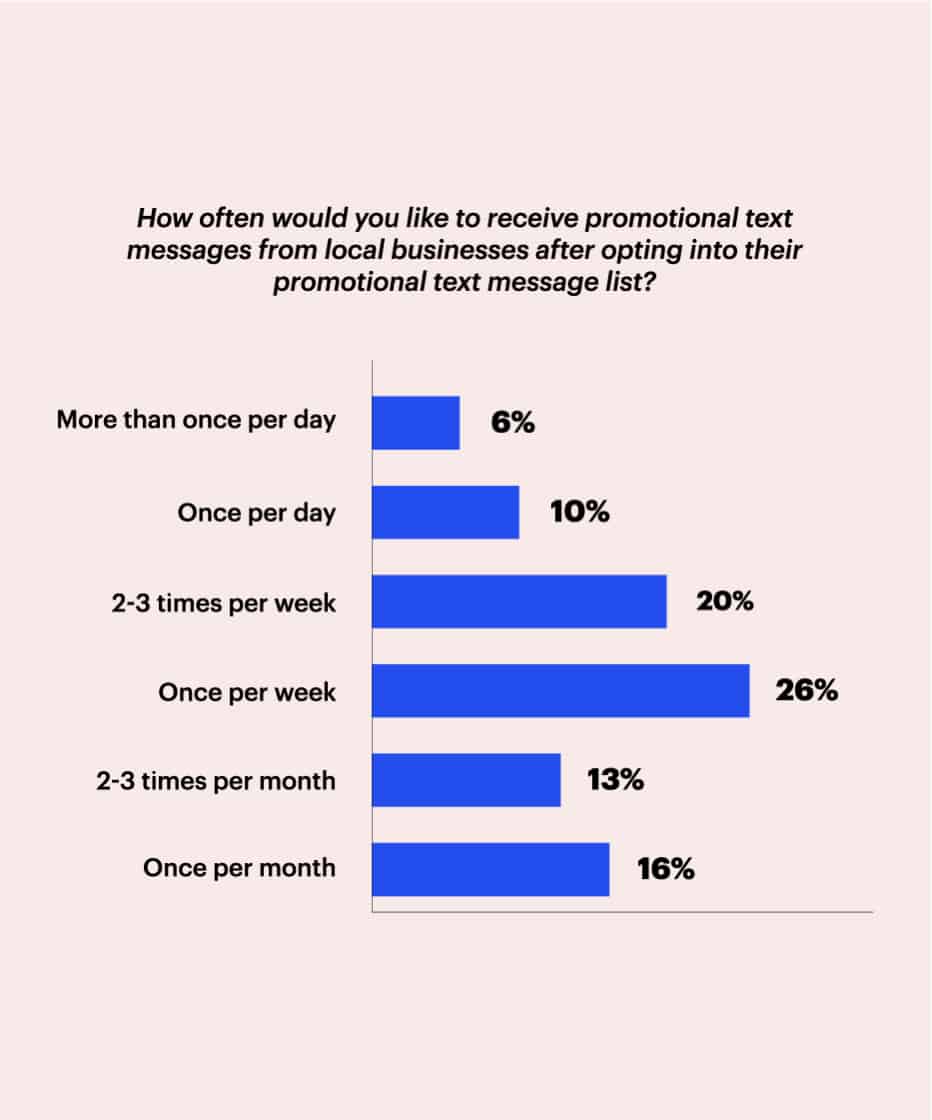
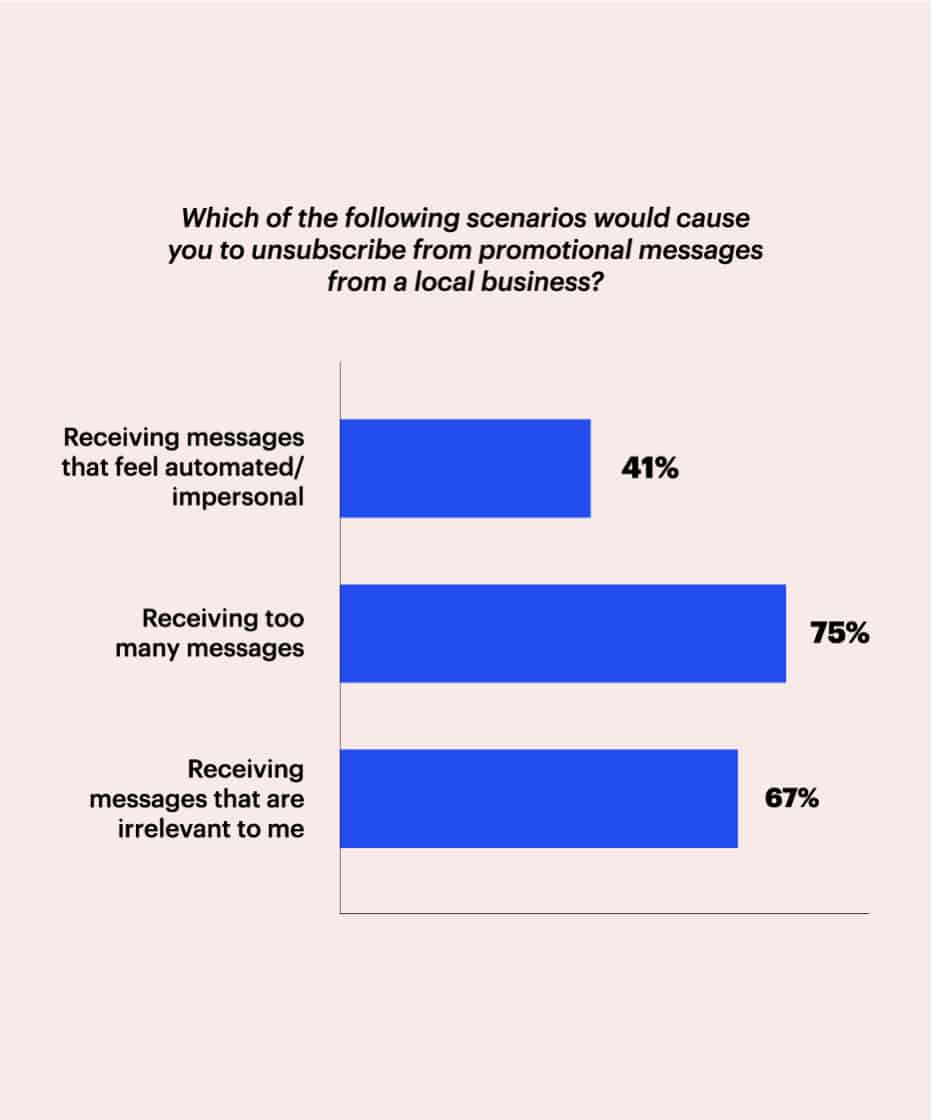
The day and time a message is sent can significantly impact your SMS marketing performance. And it varies across industries. Generally speaking, message revenue is usually higher for texts sent in the afternoon (after 1pm) than it is in the morning (before 9am). Campaign messages also have significantly higher click-through rates in the evening and afternoon.
Because businesses are different, it’s important to test what works best for your specific segmentations. Your younger, higher earning customers are likely working and might prefer to receive texts at the end of the workday or during their lunch hour, when they have time to take a break. Your older customers might be early birds and want to see your offers before they make plans for the day.
When scheduling your campaigns, it’s also important to remember locations and relevant time zone differences. Your customers in Canberra, Australia definitely don’t want to receive a promotional text at four in the morning though it’s one in the afternoon for your customers in Dallas, Texas.
It might seem simple, but carefully accounting for locations and times can make all the difference in the success of your campaign.
The specific intentions of your campaign also have an impact on when you send. For best results for an event, such as an opening party or webinar, the best time to send a promotion is the day of. Promotions for flash sales are also usually effective day of.
Whatever you’re promoting, remember that your texts should always contain start and end dates. For sales, end dates are deal drivers. For events, clearly designated dates and times (especially if the event is going to occur again) are a must.
Developing a campaign content calendar
When it comes to running successful campaigns, timing is everything. Sending a promotion for a discount on snow tires right before winter hits can lead to a payment in seconds. And sending a late promotion for a holiday product at 8am on the Wednesday after Christmas can fall pretty flat.
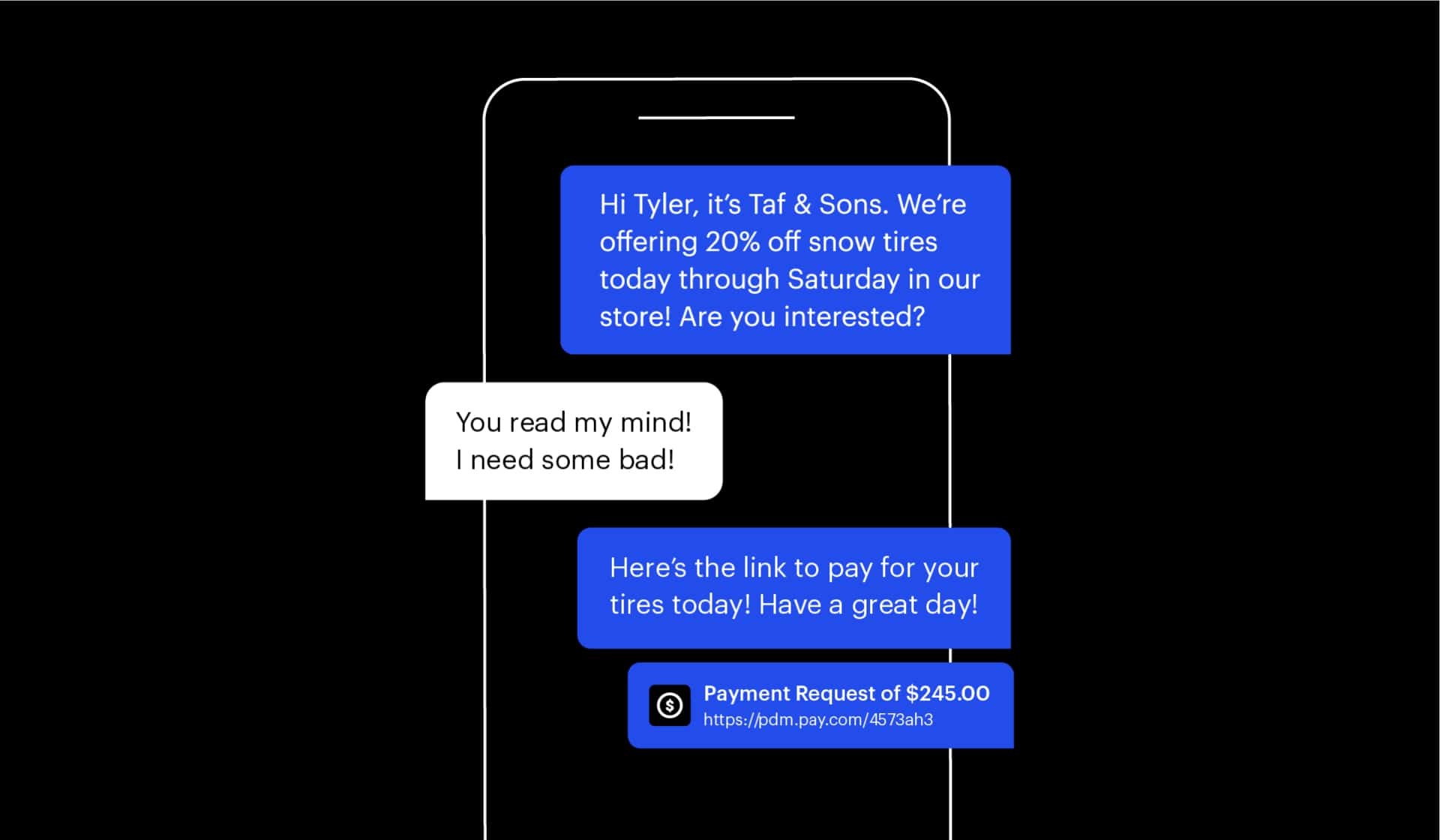
While improving campaign performance takes analysis and some experimentation, a simple and fail-proof way to boost your numbers is to create a content calendar that allows you to send the right message at the right time, every time.
An SMS marketing content calendar is an organizational asset that features dates and times, target audiences and segments, and links to be included in the messages. It also includes campaign copy and creative assets (photos, GIFs, attachments, etc.).
Creating an SMS marketing content calendar has significant benefits for you and your employees. It allows you to save time by planning ahead and anticipating what content you will be distributing in the future. It also helps you stay organized, create a workback schedule to hit deadlines, and plan more tailored messages (as well as follow up) for specific audiences.
This asset is particularly crucial to properly spacing out campaign activity—especially when it comes to using automated campaigns. When you have messages going out automatically, it’s vital to have your timing and content perfected to a T in order to execute well when the time comes and avoid costly mistakes.
Content calendars also encourage team alignment in providing team-wide visibility into SMS marketing strategy and execution. With your team, you prepare content in advance and coordinate across the board, including obtaining needed links, creative, approvals, and promo codes.
Lastly, with this asset, you can take advantage of relevant moments including holidays, events, and promotions. You can also track what works and continually refine your SMS marketing strategy. Well-designed calendars can help you identify patterns—like which days, times, offers, and frequencies work best for which audiences. They allow you to look back on past activities to borrow from past ideas or campaigns.
How to create an SMS Marketing Calendar
So how do you do it? It’s really quite simple. You can start small with a basic spreadsheet, or make SMS part of an existing business calendar. For most local businesses, the ideal calendar is not complicated and may build on your existing promotional schedule.
01. Identify the events, holidays, and seasons relevant to sending out promotions for your business. In doing so, you might consider leveraging SMS for current promotions you’re running through other channels.
02. Determine specific promotions and offers to run. If you’re having a hard time getting started, pay attention to what promotions and offers your competitors are running and at what times—especially which ones seem to be the most successful.
03. Identify your target audiences. Promotions are not effective at the same times and for the same customers across the board. Each customer has a personal history with you that needs careful analysis. If you cater correctly, you can reap huge rewards.
04. Start crafting your campaign copy. While you should do this in advance, don’t hesitate to make changes as the dates approach. Sometimes changes are even necessary to accommodate for current events and changing climates.
05. Review with relevant team members. As always, the most important part of making a calendar is to be aligned across the board. Make sure everyone has a voice and start building your campaigns and scheduling in advance.
To get started, download this easy template!
Should I respond to SMS marketing replies?
It’s important to remember that successful SMS marketing goes way beyond “blasts.” Consumers don’t want to be bombarded with one-way messages. And unlike email, they’re far more likely to reply to text-based marketing when it’s done right. They want real conversations.
The more human feel your communications carry, the more effective they will be. One-way messages feel like a bot. They’re impersonal and unengaging. The magic of SMS marketing is its ability to feel more human and convenient than any other communication channel. Two-way messages, done well, feel like a real conversation. And that’s where the money is.
If you look at the stats, your customers are craving conversations. 24% of consumers are already conversing—having a two-way, real conversation—with local businesses via text message. And of those who aren’t, 56% want the ability to do so. Your customers crave connection—and that includes the encouragement to converse with you one on one.
74% of consumers report that they would be more likely to text with a local business if they knew a real person was going to receive and respond to their message.

Your customers expect fast replies
According to a Google report, taking more than 20 minutes to reply to a text can be considered rude. And while customers certainly give businesses more wiggle room than they do friends and family, they still have high expectations for your response time—especially if their question is pressing.
The most important thing is to set response time expectations and keep them. If you have a pledge to reply in 10 or even 30 min, make good on that pledge. However, it’s always helpful to air on the side of giving your employees more time.
It’s also important to consider the nature of the text and it’s time sensitivity. A question about a sale or an appointment happening in the next hour might need a <5 min response while a question on inventory might have a bit more leeway. Whatever the question, businesses should never take more than a working day to respond.
An SMS marketing solution + automation = speed
In order to do this, local businesses need an SMS marketing solution that allows them to effectively manage responses. For local businesses, this involves effectively routing conversations to representatives on the ground, customer service teams, and reception or service areas. For multi-location businesses, it includes mapping conversations to the right locations for responses so no time is lost.
Keep in mind that you also want to engage customers regardless of when they contact you. When it comes to things like confirming appointments and offering updates, messages feel more human when sent between 9-5 (when employees would normally be working).
With the right SMS marketing solution, many businesses successfully use automated messaging features specifically for after-hours communication. You might consider actively sending texts during business hours and using automated messages when leads engage with you after-hours. An after-hours automated text might look something like this:
“Thank you for contacting Belview Tires. These messages are not regularly monitored on weekends & evenings. We will reply during business hours. We appreciate your business!”
With the right technology, you can also respond automatically to FAQs. As the conversation continues, if the consumer asks a question that requires live assistance, the platform can trigger an employee to respond back. This can save a huge amount of time for you and your employees while allowing you to keep your reputation of always responding to your customers.
IMPORTANT DISCLAIMER: This guide is for informational purposes only. It is not intended as legal advice or a comprehensive summary of the law. You are encouraged to retain your own legal counsel to review this guide and assess your unique text messaging business scenario. In addition, a business can do many things, including use of the Podium system outside its intended use, which can give rise to liabilities beyond those addressed in this guide.
